TruthScan vs. Midjourney Images
MidJourney makes beautiful art — but can TruthScan spot when it’s AI? We put them head-to-head.
John Angelo Yap
Updated August 28, 2025
TruthScan detective catching a mid-journey boat, generated with GPT-4
Reading Time: 4 minutes
AI-generated images have gone from a curious novelty to something that can pass as professional-level work in just a few short years. And when it comes to generative art, few names have made as much noise as Midjourney.
On the other side, tools like TruthScan exist for one reason: to separate the real from the (deep)fake. The question is, how well can it do that when faced with one of the most popular and widely used AI image models around?
That’s what this review is about. We’ll look at what Midjourney does best, how TruthScan approaches the detection game, and where they intersect. The actual testing results come later, but this breakdown sets the stage for why this matchup matters.
What is Midjourney?
If you’ve spent any time in the AI space, you’ve already heard of Midjourney. It’s one of the first AI tools to go mainstream purely through visuals. Unlike ChatGPT, which built its hype on text, Midjourney captured attention with its surreal, artistic, and often breathtaking images.
Where Midjourney shines is style. It leans more toward artistry than photorealism. If you need something cinematic, painterly, or abstract, Midjourney can take a short sentence and turn it into a gallery-worthy output.
Over time, it has added stronger realism options, higher resolutions, more refined controls, and even a text-to-video model.
What is TruthScan?
TruthScan is an AI image detector built to do one thing very well: identify whether a visual was AI-generated.
In a time when fabricated images can pass as real, this kind of detection is becoming less of a niche and more of a necessity. TruthScan uses a mix of forensic analysis and pattern recognition to flag content, checking for subtle tells in pixel patterns, texture consistency, and rendering anomalies that humans might overlook.
What sets it apart is how user-friendly it is. Instead of drowning you in technical jargon or requiring a forensic background, it gives a straightforward output: real or AI. Alongside that, it provides a confidence percentage, which helps you judge how much weight to give the result.
Why This Matters
A lot of people think of Midjourney as just “fun” — a way to make fantasy scenes or slick digital posters. But it’s also being used for more subtle purposes: social media campaigns, blog visuals, even product mockups.
The problem is that when an AI-generated image starts blending into contexts where you expect authenticity, the risks rise. Imagine news content, ads, or academic work peppered with AI images passed off as real.
That’s where TruthScan comes in. If it can keep pace with Midjourney — a tool used by millions and capable of producing near-photo outputs — it shows that detection isn’t falling behind in the AI arms race.
Truthscan vs. Midjourney: Testing
Test #1
Truthscan: Correctly classified image as AI-generated.
AI Likelihood Score: 98%
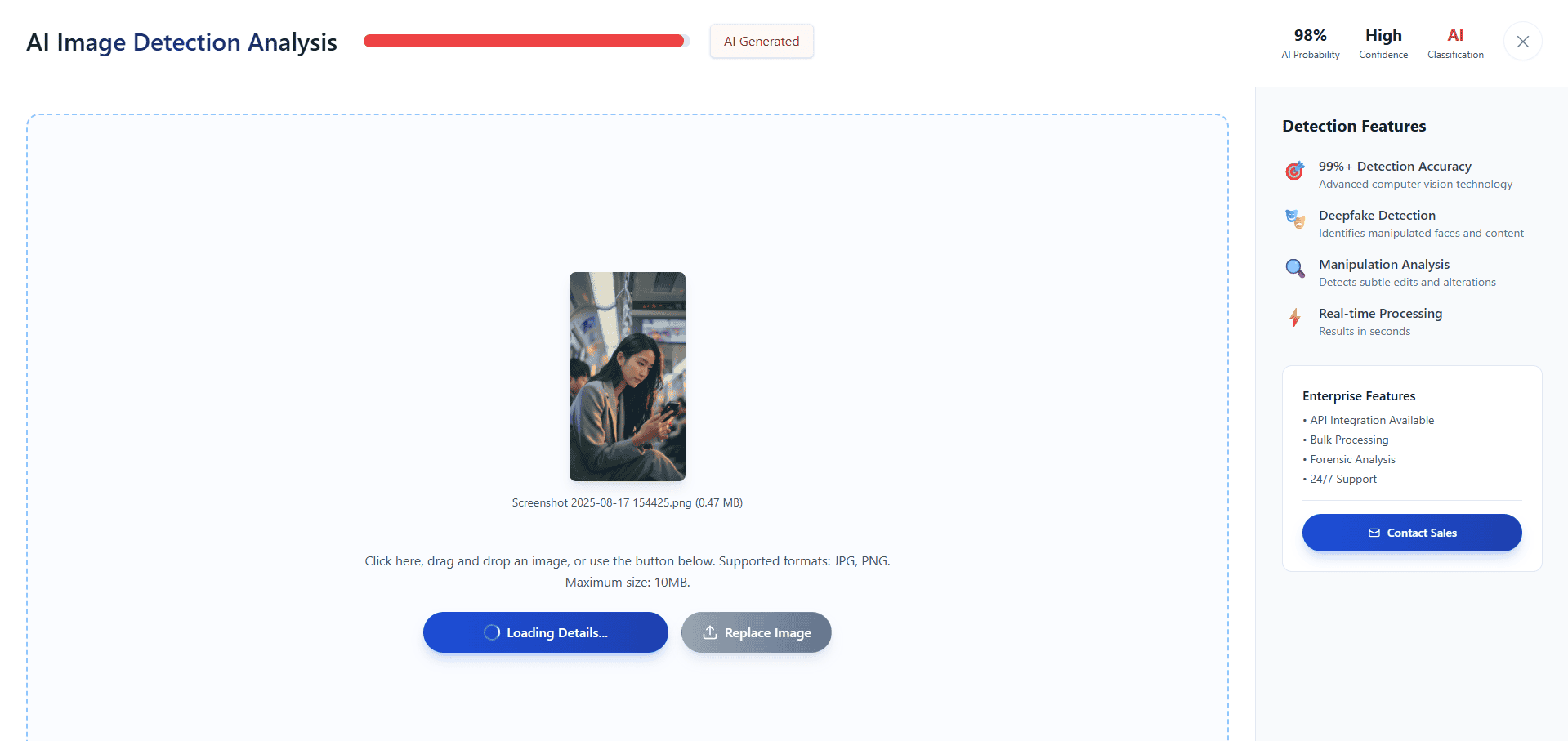
Test #2
Truthscan: Correctly classified image as AI-generated.
AI Likelihood Score: 98%
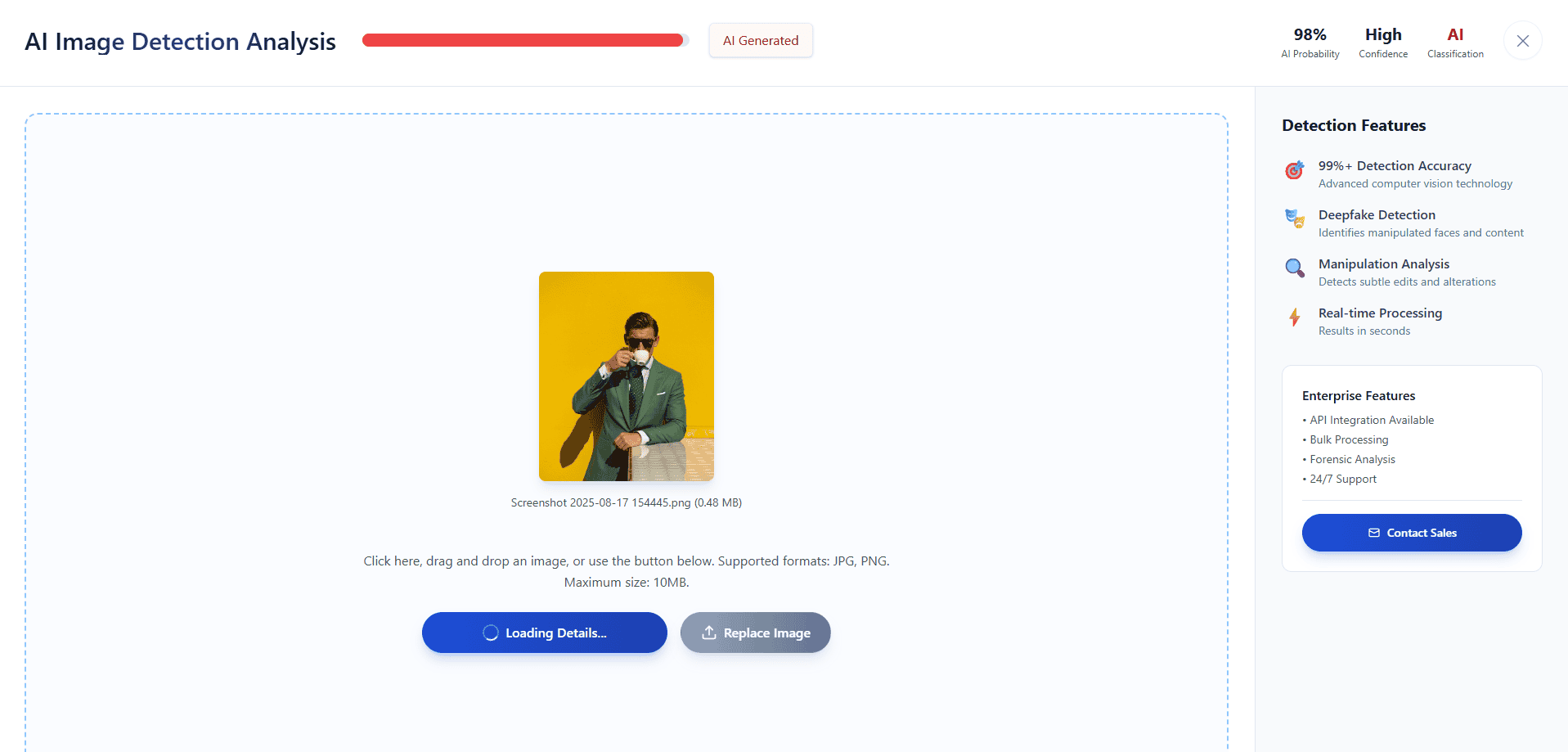
Test #3
Truthscan: Correctly classified image as AI-generated.
AI Likelihood Score: 97%
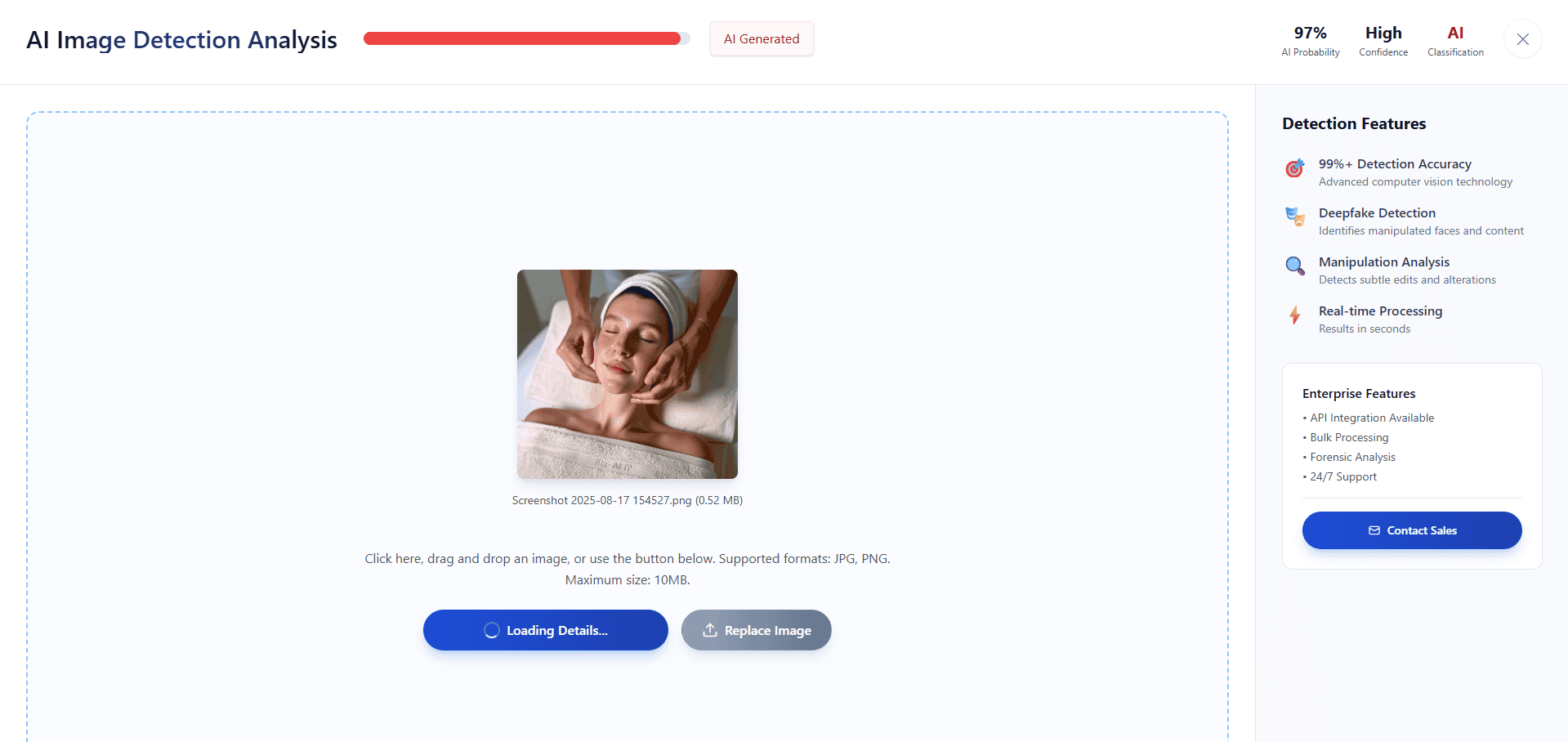
Test #4
Truthscan: Correctly classified image as AI-generated.
AI Likelihood Score: 98%
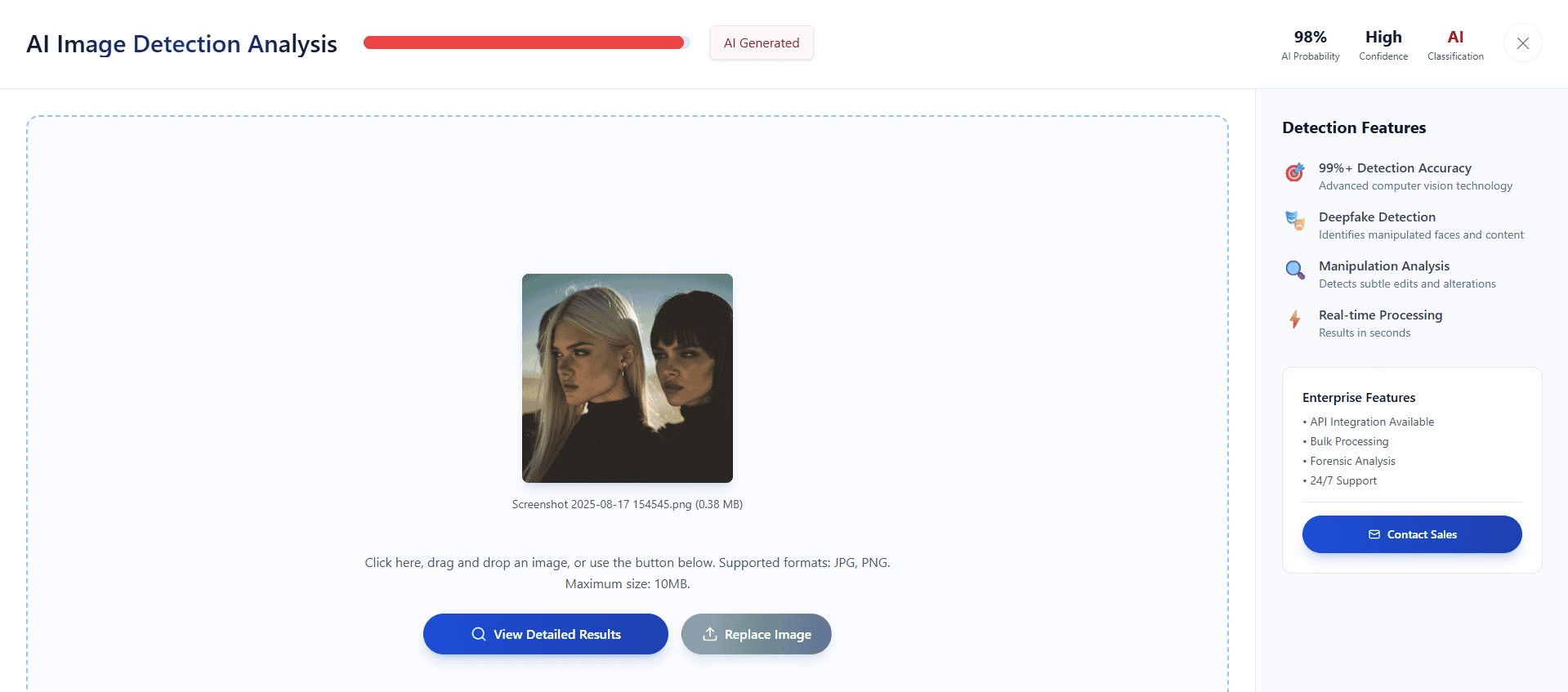
Test #5
Truthscan: Correctly classified image as AI-generated.
AI Likelihood Score: 97%
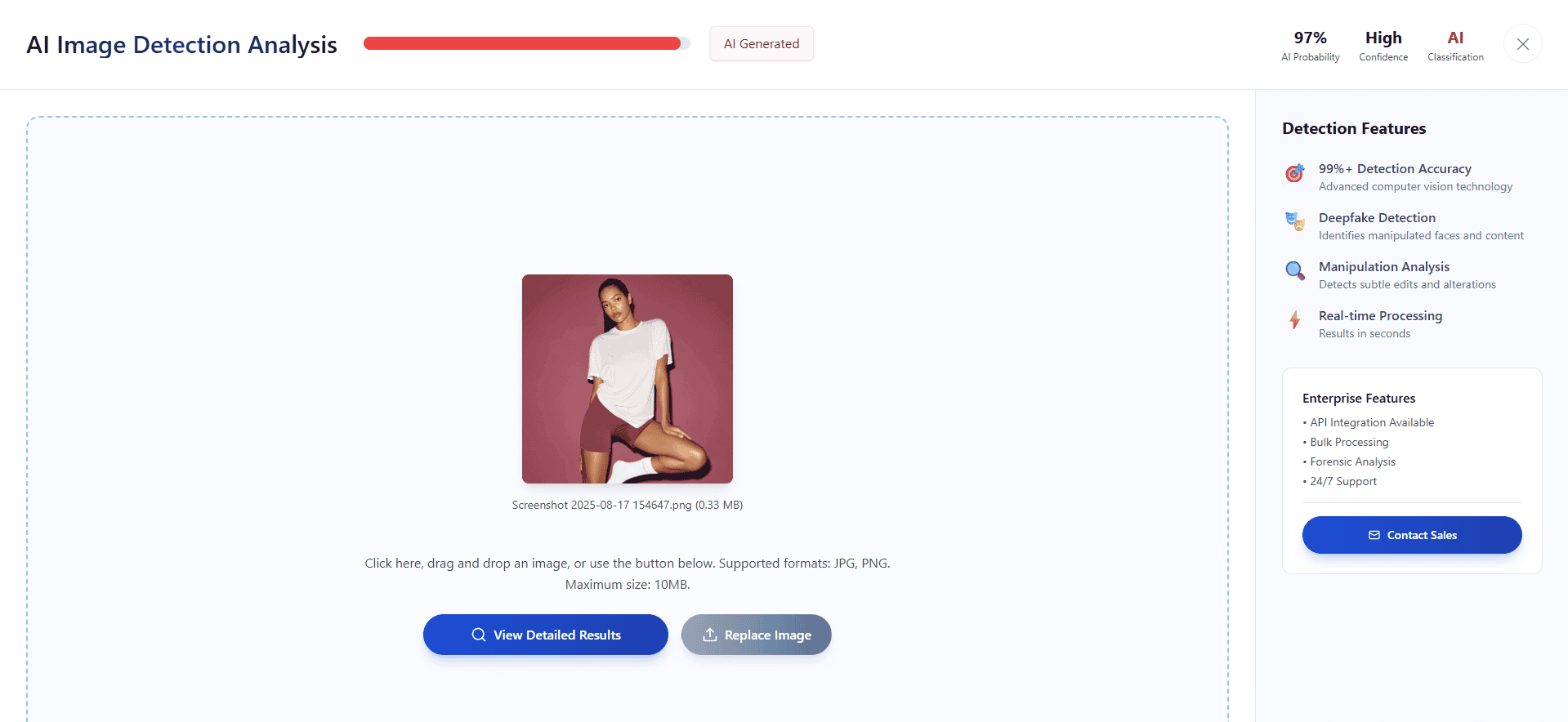
Test #6
Truthscan: Correctly classified image as AI-generated.
AI Likelihood Score: 98%
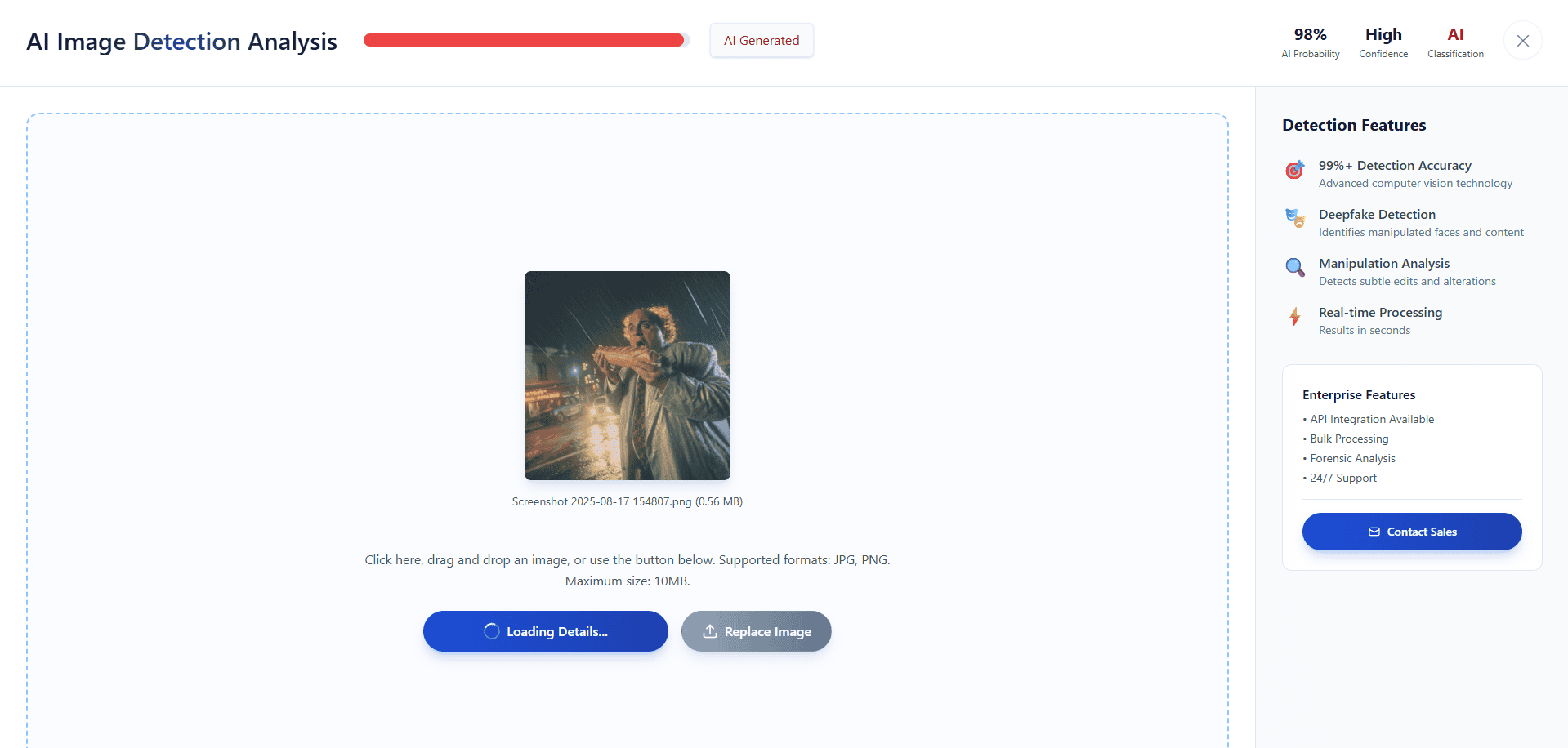
Test #7
Truthscan: Correctly classified image as AI-generated.
AI Likelihood Score: 97%
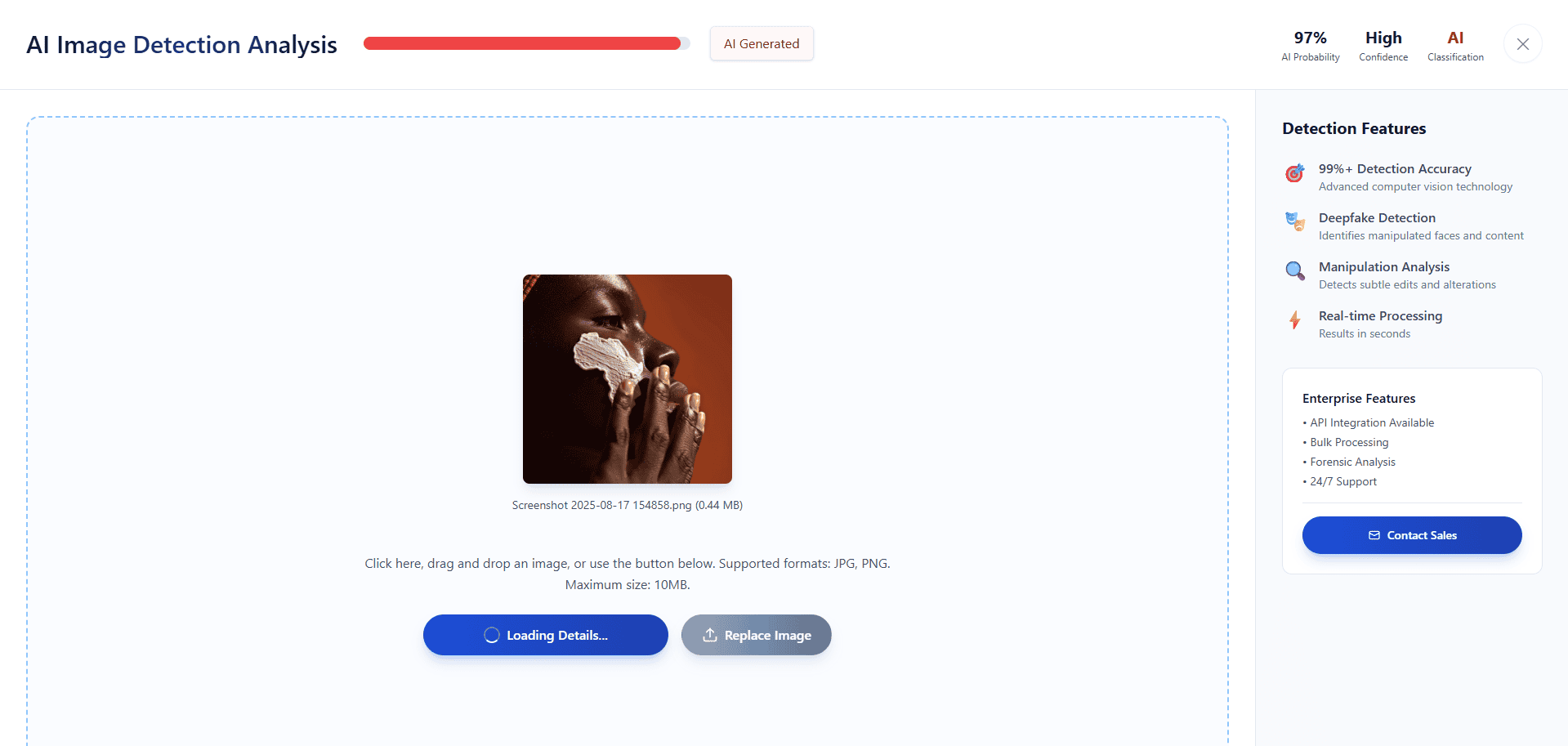
Overall Score
Test Number | TruthScan |
#1 | 98% |
#2 | 98% |
#3 | 97% |
#4 | 98% |
#5 | 97% |
#6 | 98% |
#7 | 97% |
Score | 97.5% |
The Bottom Line
Midjourney and TruthScan make for an interesting pairing. One is all about creating, bending reality into something cinematic or surreal. The other is about peeling back the curtain and asking: is this really what it looks like?
Even though Midjourney isn’t the most advanced AI image generator anymore, it’s still one of the most widely used. That makes detecting its outputs crucial. And in testing, TruthScan managed a 97.5% accuracy score against Midjourney images — a strong showing, especially given how stylized and convincing some of Midjourney’s newer outputs can be.
What that means is simple: if you’re using Midjourney for fun, design, or even commercial projects, chances are high that TruthScan will still flag it correctly. It’s not perfect, but it’s reliable enough to matter.
The tension between AI creation and AI detection isn’t slowing down. Tools like Midjourney will keep getting better at faking reality, and tools like TruthScan will keep getting sharper at calling them out.
If you’re making art, Midjourney is a creative playground, but TruthScan is a true and very reliable safety net.
Want to Learn Even More?
If you enjoyed this article, subscribe to our free newsletter where we share tips & tricks on how to use tech & AI to grow and optimize your business, career, and life.